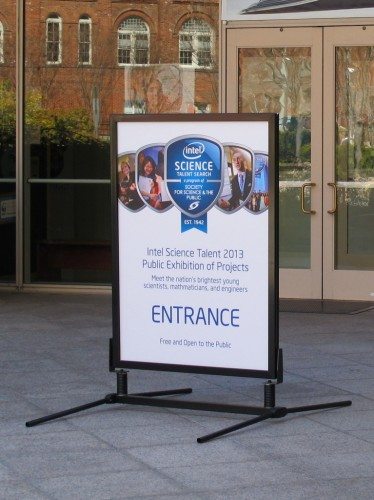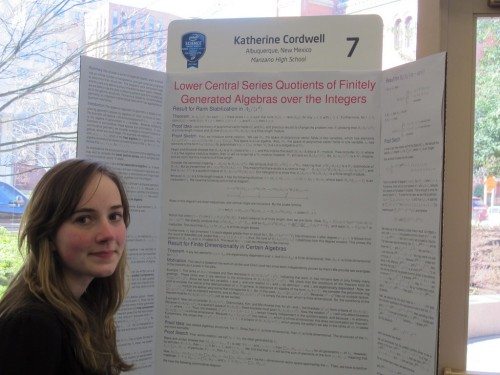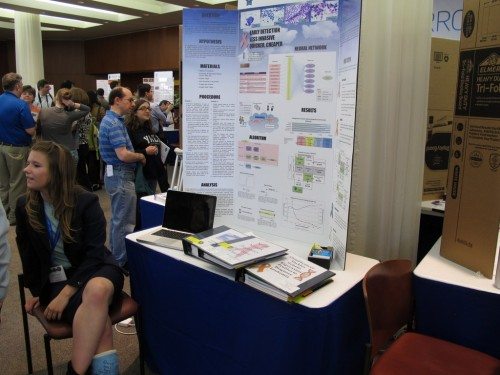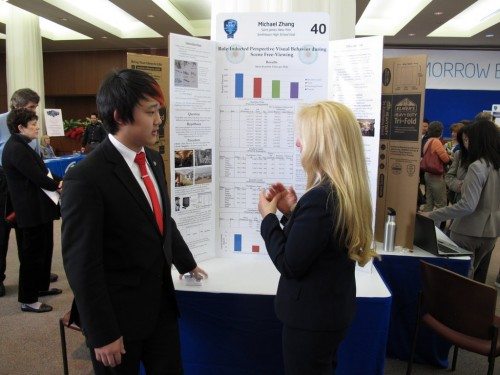This post brought to you by Intel. All opinions are 100% mine.

I had the privilege this past weekend to attend an Intel sponsored event in Washington DC. It was a perfect day and venue. Its purpose was to highlight the finalists in a science competition. It was a half day event and showcased the projects of the 40 High School Senior finalists from around the US. The top winners will be announced on March 12.
The Intel Science Talent Search (Intel STS) is the nation’s most prestigious pre-college science competition. Intel STS alumni have made extraordinary contributions to science and hold more than 100 of the world’s most coveted science and math honors, including the Nobel Prize and the National Medal of Science.
The Intel STS recognizes and rewards 300 students, as well as their schools, as semifinalists each year. From that select pool, 40 finalists are then invited to Washington, DC in March to undergo final judging, display their work to the public, meet with notable scientists, and compete for $630,000 in awards, including the top award of $100,000.
I have to admit that most of what was being shown was way over my head. Although I’m a college graduate and have over 30 years technical experience, these topics were definitely post graduate. Given the limited time I didn’t get to speak personally to all the participants, but I did see all their presentations. To those that I did speak with, they all had a common reason for following their paths and that was the help of a mentor.
The venue was the National Geographic Society Building in DC. The display of projects was open to the public. Some of the projects include promising innovations in:
- Breast cancer treatments and therapies
- The efficiency of computer networks
- Optimizing algae biofuels
- Cell movement during wound healing
- Indoor air contamination filtration
Although there was a broad representation for the different States, California and New York had more finalists. Also, I noticed there seemed to be an equal number of boys and girls.
What was so amazing to me was the enthusiasm each participant had for their discipline. I spoke with Katherine for a bit to figure out why she picked algebra as a concentration. She said she was motivated by one of her teachers and found it very interesting. She started out with a simple math problem and through encouragement from her teachers found a fascination with algebra. I remember how my teachers encouraged me to follow my interests.
Even a broken leg couldn’t keep this girl away. Her interest in using neural networks for comparison of data sets to more quickly detect cancers was ingenious and has real world practicality.
Many of the students were accompanied by their proud teachers. I spent some time with this lady (I forget her name). She came all the way from New York to encourage and champion her student.
This isn’t the type of science fair I had in High School. There were no exploding volcanoes or demonstrations of rum making (don’t ask me). This was a little deeper.
In the competition, high school seniors are judged on their original scientific research projects as well as a broader measure of their achievement and leadership, both inside and outside the classroom. Intel has sponsored the competition since 1998. In 2012, more than 1,800 young scientists entered the fair, the most the competition has seen in over a decade and a 5 percent increase over the total number of 2011 applicants.
What I took away from the half day event is an appreciation of the science talent the US can still produce. Having lived for 20 years in Asia and working with the talented students there, I was worried we were falling behind. I’ll sleep better tonight.







